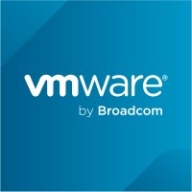

Red Hat OpenShift and VMware Cloud on AWS compete in the cloud computing domain. VMware Cloud on AWS may be the superior choice due to its advanced features and value proposition.
Features: Red Hat OpenShift provides robust application development, comprehensive security features, and extensive integration options. VMware Cloud on AWS offers seamless integration with VMware environments, high scalability, and advanced networking solutions.
Ease of Deployment and Customer Service: Red Hat OpenShift features a straightforward deployment model with excellent customer service. VMware Cloud on AWS involves a complex deployment process, integrating efficiently with VMware ecosystems, supported by dedicated multi-cloud environment support.
Pricing and ROI: Red Hat OpenShift is known for an attractive setup cost with a focus on ROI through efficient resource usage. VMware Cloud on AWS has a higher setup cost, with potential ROI justified by scalability and comprehensive features suited for complex enterprise needs.
| Product | Market Share (%) |
|---|---|
| Red Hat OpenShift | 5.7% |
| VMware Cloud on AWS | 2.5% |
| Other | 91.8% |


| Company Size | Count |
|---|---|
| Small Business | 17 |
| Midsize Enterprise | 4 |
| Large Enterprise | 40 |
Red Hat OpenShift offers a robust, scalable platform with strong security and automation, suitable for container orchestration, application deployment, and microservices architecture.
Designed to modernize applications by transitioning from legacy systems to cloud-native environments, Red Hat OpenShift provides powerful CI/CD integration and Kubernetes compatibility. Its security features, multi-cloud support, and source-to-image functionality enhance deployment flexibility. While the GUI offers user-friendly navigation, users benefit from its cloud-agnostic nature and efficient lifecycle management. However, improvements are needed in documentation, configuration complexity, and integration with third-party platforms. Pricing and high resource demands can also be challenging for wider adoption.
What are the key features of Red Hat OpenShift?Red Hat OpenShift is strategically implemented for diverse industries focusing on container orchestration and application modernization. Organizations leverage it for migrating applications to cloud-native environments and managing CI/CD pipelines. Its functionality facilitates efficient resource management and microservices architecture adoption, supporting enterprise-level DevOps practices. Users employ it across cloud and on-premises platforms to drive performance improvements.
VMware Cloud on AWS integrates VMware's enterprise-class SDDC with AWS's scalable infrastructure, offering innovative solutions for IT needs. It combines both environments for seamless application migration and management.
Developed to address hybrid cloud challenges, VMware Cloud on AWS offers streamlined processes for migrating applications, enhancing scalability and reducing costs. By leveraging VMware's infrastructure alongside AWS's global presence, organizations can efficiently optimize their IT environments. Users have noted the ease of integrating on-premises infrastructure with AWS environments, highlighting it as a valuable tool for modern infrastructure transformations. Despite its strengths, reviewers suggest enhancements in cost management tools.
What are the most important features?
Which benefits and ROI should users look for?
In particular industries, VMware Cloud on AWS is used extensively in finance and healthcare due to its strong compliance and security features. Financial institutions benefit from its disaster recovery capabilities, while healthcare providers utilize its secure data management features. It enables seamless integration of applications, thus supporting industry-specific regulatory requirements. Its ability to scale easily supports dynamic workloads and increasing data handling needs.
We monitor all Hybrid Cloud Computing Platforms reviews to prevent fraudulent reviews and keep review quality high. We do not post reviews by company employees or direct competitors. We validate each review for authenticity via cross-reference with LinkedIn, and personal follow-up with the reviewer when necessary.